Working for two weeks in a top-class hotel restaurant on the coast of Tuscany, Italy taught me a lot, not only about the kitchen, but also about how to work with people of different cultures, attend to customers of different backgrounds, and the importance of a close family.
Work for me at the Agrihotel Elisabetta was from 8 am to midnight, with a four hour break between the lunch and dinner periods. Morning was always when I had the most to do, because it involved preparing the entire appetizer and dessert buffets, the first course, and second course for the big evening dinner. Lunch didn’t draw many customers because most of the hotel guests were out during the day, and Germans, as I soon learned, don’t tend to eat lunch.
I say Germans because 98% of the hotel guests were from Germany. Luigi Brunetti worked for many years in Frankfurt, therefore he is well accustomed to German life, and markets his hotel all over Germany. In fact, I became good friends with a German 16-year-old waiting tables at the restaurant. His name is Léon, and every night after working in the kitchen I would join him manning the bar once all the guests were finished eating. So in the end, I had not only learned about cooking, but also about how to pour a proper German beer, brew an espresso americano, and count from 1 to 12 in German.
The mornings acted as my training sessions. At first, the chefs didn’t often give me a task because they were not sure of my ability. But once I started to show how hard I work, they gave me more and more to do. Fry the zucchini, dice the tomatoes, decorate the tiramisú (my favorite dessert), whisk the Bechamel, fill the profiteroles, crack the lobsters, prepare the lasagna, sear the ossobucco, roll the pizza dough, and so much more. As I was given more work, I racked up a lot more stories to share.
The Night of 1000 Pastas
While I always had something to do in the morning shift, at dinnertime I was often left standing awkwardly in the middle of the kitchen, trying not to be in the way. At the beginning I occupied myself at night by helping Marinella and Rosy wash dishes, but Luigi told me not to “waste my time cleaning” and instead “get back in the kitchen to learn to cook!!” Although, by working my butt off at washing dishes at the speed of light the first two nights, I solidified my reputation as a hard worker.
So, as I said before, the night shift involved more standing around, watching the chefs in action. And boy, are they in action! They work at the speed of light! But they never worked faster than on that Thursday night, my 8th night of work.
The first and second courses at dinner changed every night, while the appetizer and dessert courses always came in the form of a buffet. The first course of that night was going to be a classic Minestrone soup, made with an assortment of fresh vegetables (zucchini, carrots, onions, etc.). I couldn’t believe it. It just seemed wrong to me to be serving a hot soup in the middle of summer, let alone to Germans, who don’t like to eat a “wimpy vegetarian dish” without some sort of sausage stuffed in it.
Well, it turns out I must have been gaining a “top chef knowledge”, because I was right. Almost every customer ordered a pasta instead of going with the soup on the fixed menu. It was up to Leonardo and Matteo, the Head and Sou Chef, to serve 40 different pasta dishes all at the same time, as the three kitchen ladies could do nothing more than bite their nails and stay out of the wrath of the steaming cooks (the stove was also not large enough for more than two). They were filling their stove up to capacity with little pans of all different sauces: Pesto, alfredo, frutti di mare, pomodoro, vongole, aglio e olio, bolognese, 4 formaggi. Two chefs, 40+ pasta dishes, 20+ different sauces, and only 20 minutes before customers will start to complain. I have to say, I sure had a good time watching them work. I haven’t seen anything on TV that has entertained me as much as Leonardo and the Napoletano Sou Chef serving 1000 (or so it seemed) different pasta dishes in one night!
Sardine Slip Up
At first I wasn’t sure if I could taste-test things, because I didn’t want to look like a boy working in the kitchen just to get free food and tastings. So for the first few days, Leonardo, the head chef who acted as my main instructor along with Luigi, kept ordering me to taste the food. One of the first dishes I prepared with Marinella was a plate of raw sardines marinated in white wine vinegar. After ripping each head off, gutting them, and taking out each and every spine, I was more focused on the stink that was coming from my hands than trying the dish before it was placed on the buffet. Leonardo called me and Marinella over and asked, in Italian, “did you try the alici?” We stood there silent. He handed us each a sardine to try. Blehh. They tasted like pure vinegar, and were missing salt and flavor completely. I got a lump in my throat from the thought that I wasn’t making a great impression on my first day. Good thing Leonardo spotted it and was able to spruce the dish up a bit. My parents actually said the sardines were brilliant without having known what had happened.
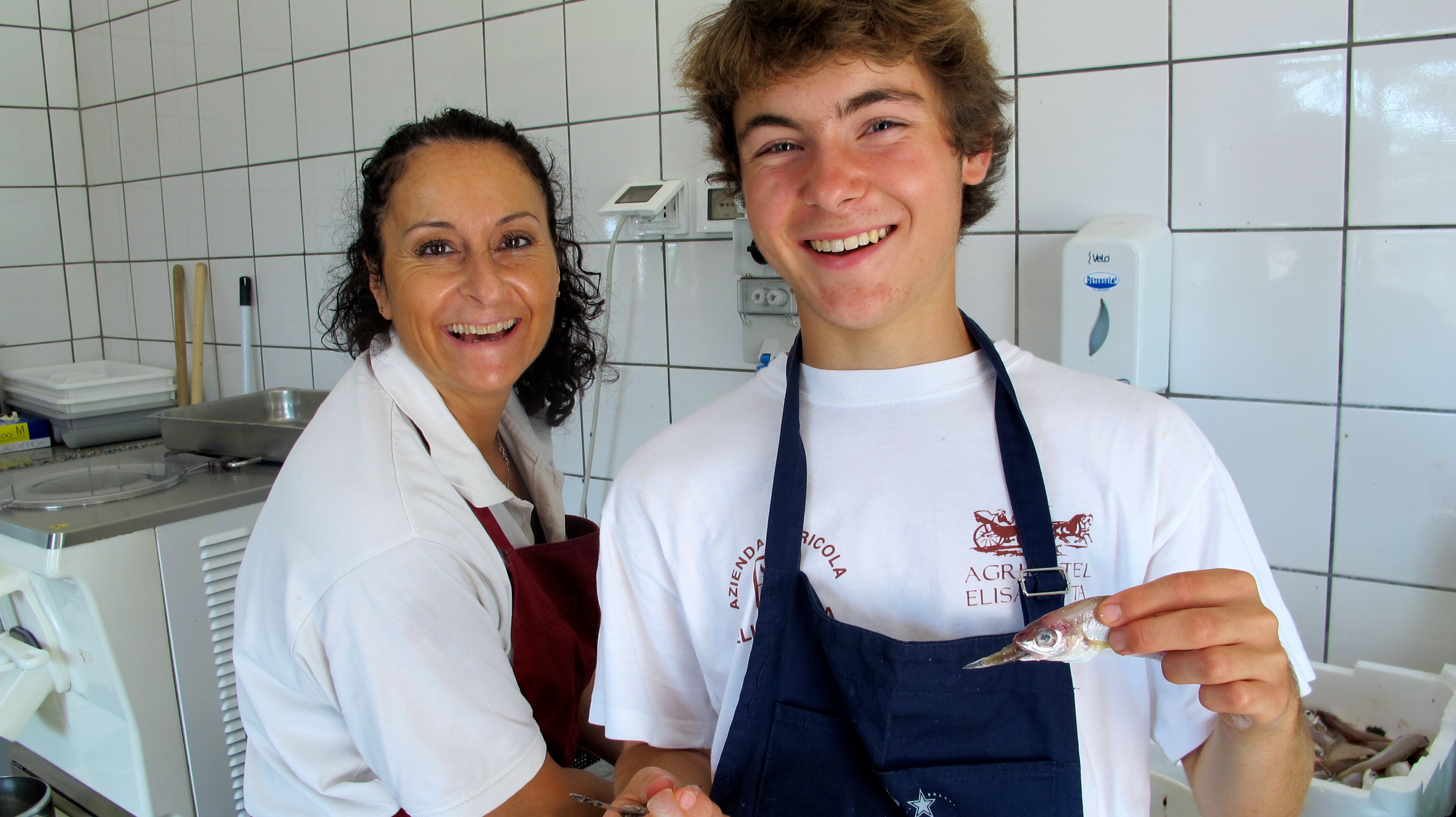
Gutting, whether it be sardines or little fish as seen here, was a common action in the kitchen. Here I am gutting fish with Rosy.
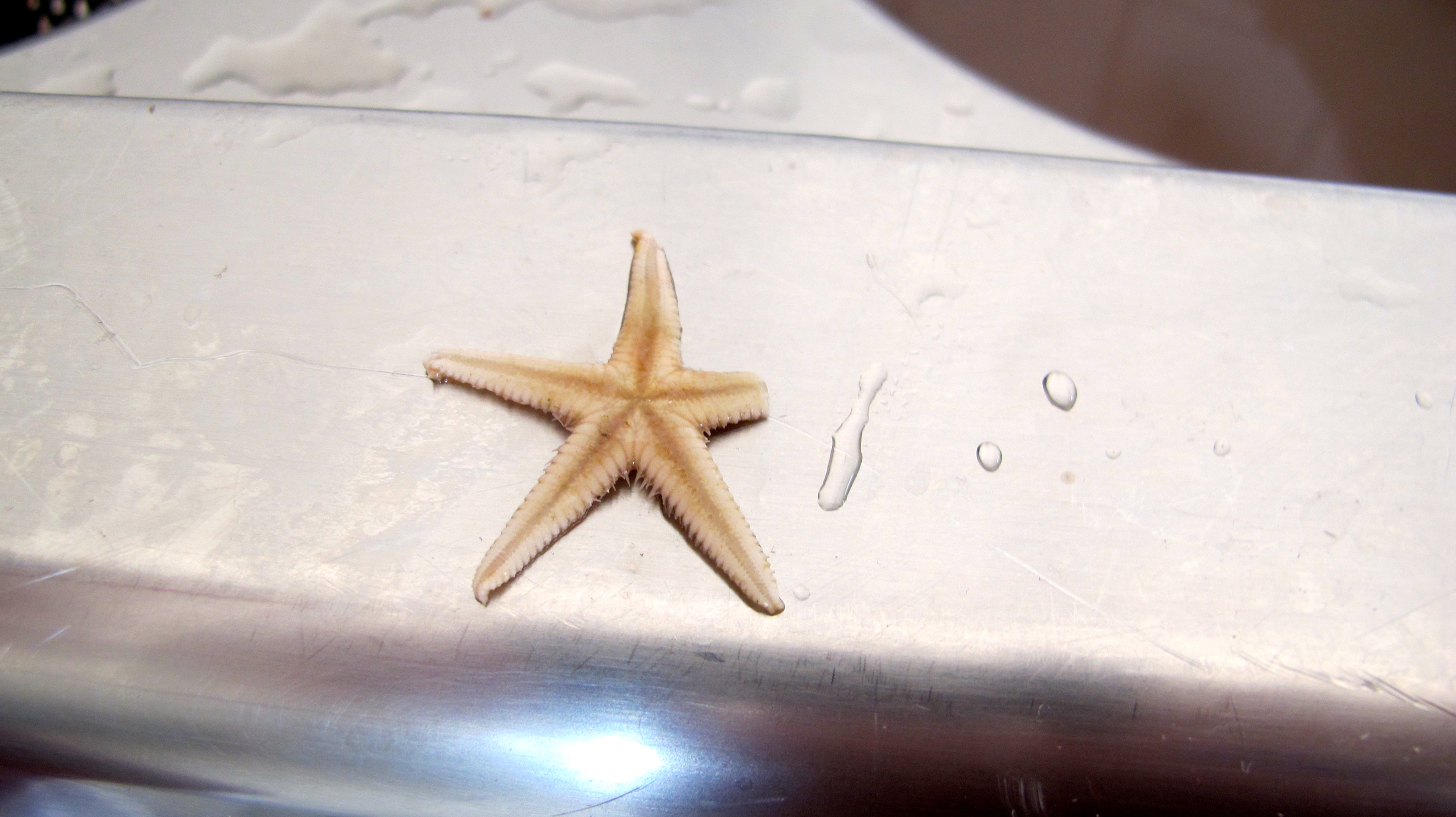
The Agrihotel would order bins of fresh fish from the mediterranean that would often contain strange and beautiful sea life.
My Moment of Bread Brilliance
Matteo, the Napoletano Sou Chef, was inspiring to watch. He worked mainly with bread, desserts, and pasta. The creations he made with bread were quite unique, and really opened my eye to the flexibility of a solid bread dough. By flexibility I mean its flexibility to be used and cooked in many different ways. He made all sorts of buffet items simply by jazzing up his bread. I saw him make numerous stuffed breads that came out looking like roll cakes, so when I had the chance, I decided to make something like it myself. I had been making panzarotti for three hours, which are similar to empanadas. I was rolling out bread dough, placing a spoonful of tomato sauce and cheese-sausage stuffing in the middle, and enclosing each tight to make a nice little ravioli-pocket thing. I had already made a billion, and we didn’t need anymore, so I asked Monica what we should do with the remaining dough and stuffing. She told me to do “what you want”.
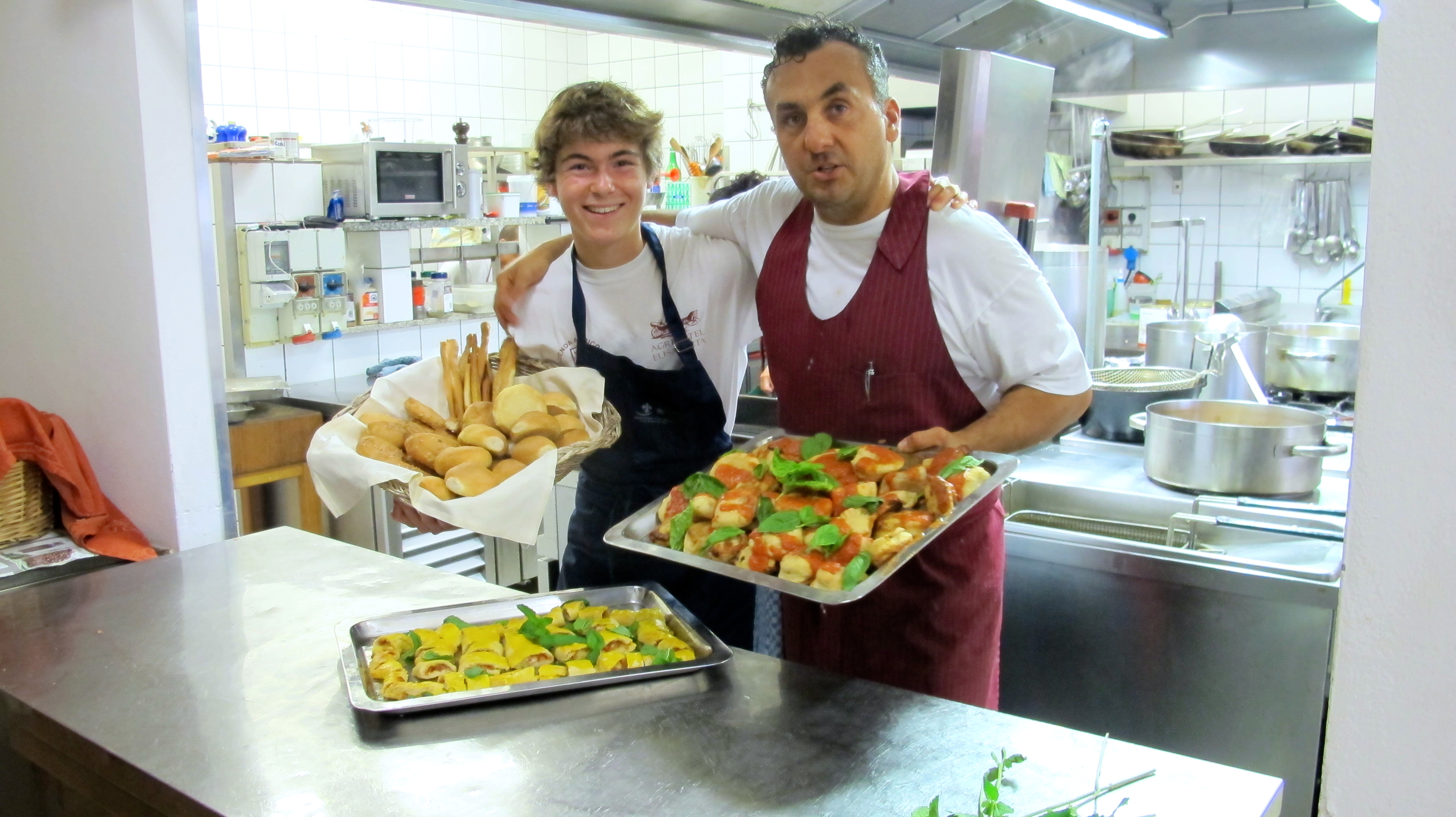
Leonardo, the Head Chef, and me holding a day’s worth of creative bread work to be placed on the buffet table.
This was a pleasing answer. I quickly got to work whisking up some egg yolks and rolling out the dough into a long sheet. I first poured a little tomato sauce down the middle of the dough, forming two long lines of tomato sauce. I then laid out two long, thin lines of stuffing straight down the middle atop the sauce lines, but maintaining a little distance between the two. The space between the two lines of sausage stuffing was then given a brushing of egg yolk. This is when Monica and Head Chef, Leonardo, came over to see what the heck I was doing. “Benny”, called Monica in Italian, “what are you doing?? There is no way you can fold the dough over the stuffing!” Leonardo, with full understanding, calmly told Monica, “Shhh.. He knows what he’s doing. It is possible.”
That’s when I took each long side of the dough by the hand, folding one over the closest line of stuffing, and the other over its closest line of stuffing, sealing the dough down in the middle where the egg yolk wash was laid. After another brush of egg yolk on top, I split the two stuffed rolls apart, placed them on a pan in the shape of a square, and baked them. My rectangle bread creation was served on the appetizer buffet table that night.
Is Luigi Behind Me??
Every time I was peeling carrots, frying eggplant, or doing any other kind of work in the kitchen, I was always keeping an ear out for the sound of Luigi (the owner of the Agrihotel) coming up behind me. As soon as I heard Luigi coming around the corner singing le ragazze serie non ci sono più at the top of his lungs, the alarm was sounded and I had to be prepared. There was always something wrong with what I was doing, according to Luigi. Even when all the other chefs would say, “yes, you’re doing a great job! That’s exactly how you do it!”, Luigi would put his arm around me and say, in a very loud, proud, Italian manner, “theese is all wrong!” The few times that he came over and had no critique to give me, the happy hippo inside of me did a little jump for joy. Of course, I was never angry, because you can’t get mad at Luigi; everyone loves Luigi. He is like a second father to me. But he is a traditionalist and perfectionist, and only his way is the correct way of getting things done. Plus, I’d much rather have Luigi, a critically-acclaimed Italian chef, and a joy to be around, than the German chef my friend Léon trained under. He would give Léon a slap every time he over-poured a beer!
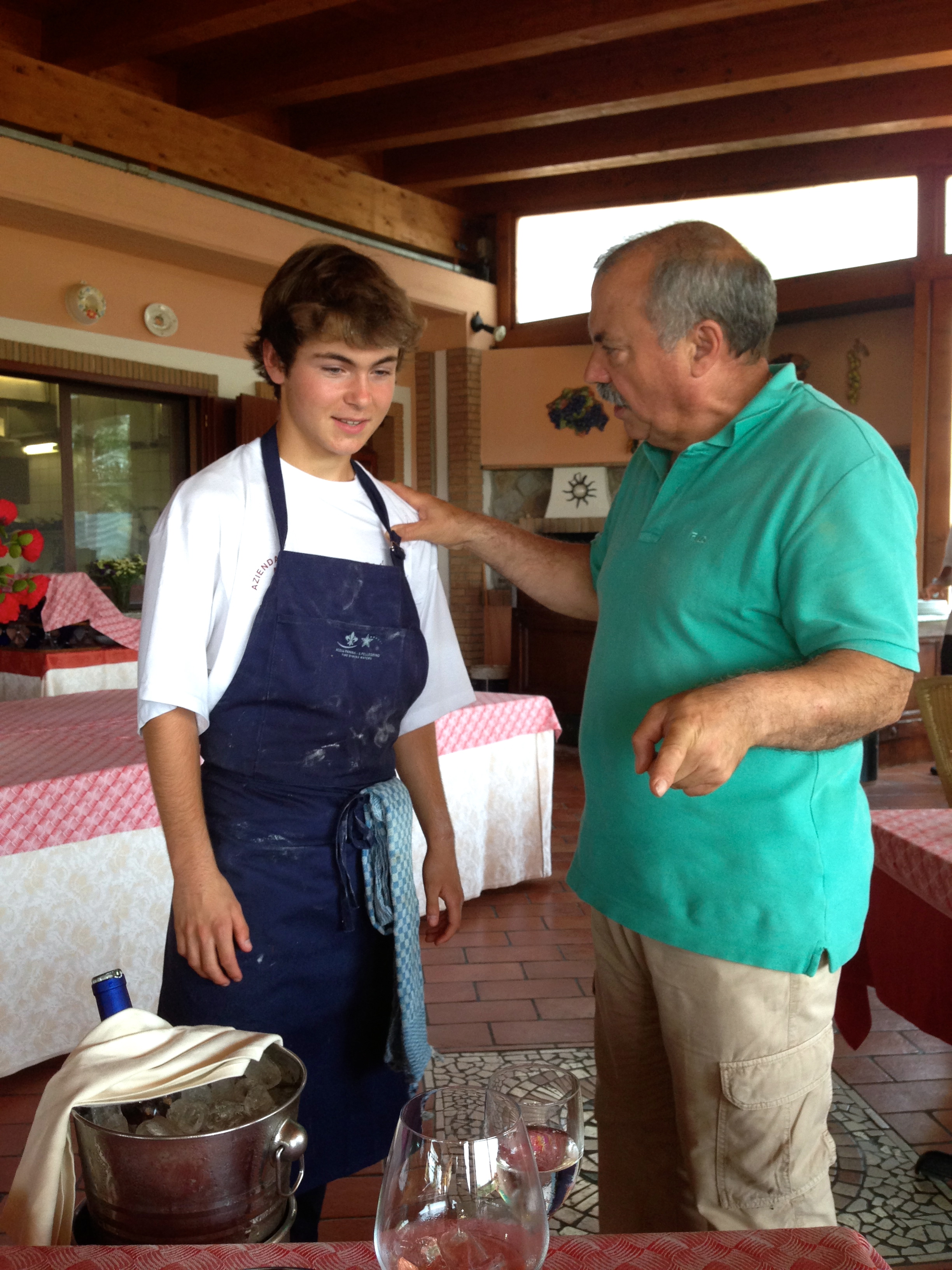
This is a shot of the typical moment where Luigi would give me advice. His glare in this picture is a classic “Luigi glare”.
Working as a chef is plenty of hard work. The chefs at the Agrihotel are not only highly qualified and dedicated, but they are also fortunate enough to serve a different menu every night. The majority of chef’s jobs can become repetitive. If there’s one thing I’ve learned from my two weeks working in a Tuscan kitchen, it’s that a chef’s hands stink. After hours of peeling onions and ripping off sardine heads everyday, I could not get my hands to smell semi-normal after a solid week! So remember, the next time you see an artisanal chef making everything by hand, show some sympathy. He or she probably hasn’t had a decent smelling hand in years.
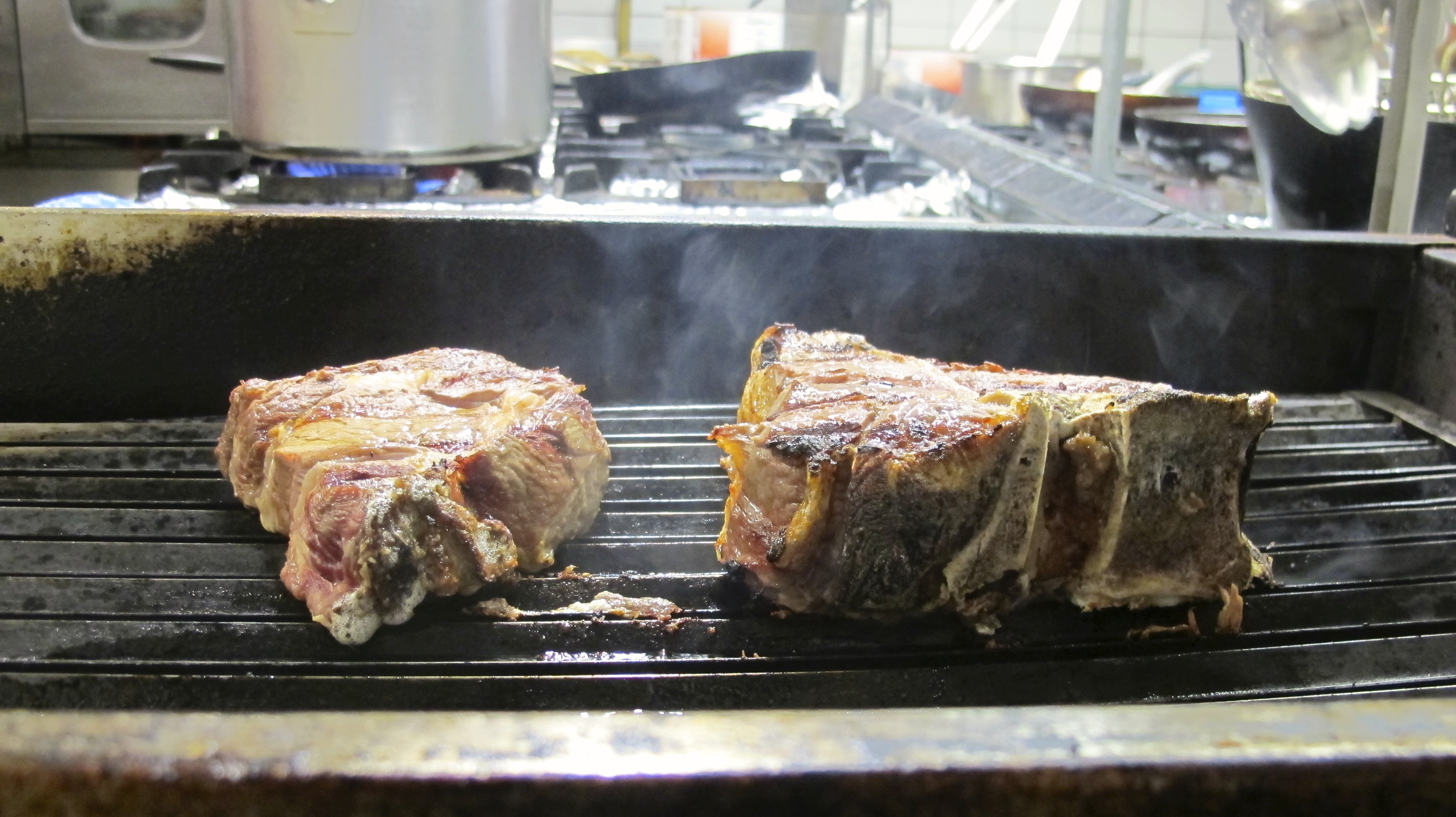
If you didn’t like the look of the second course, you could order a beautiful fiorentina steak instead.

Tuna in a pistachio crust with spinach, tomatoes, tropical sauce, and house-cut potato chips. I did the chips and diced the tomatoes.
There will be one final post on my experience at the Agrihotel all about making pizza.
If you haven’t seen the introductory post, it is: “BenGusto” Cooks at Restaurant in Tuscany
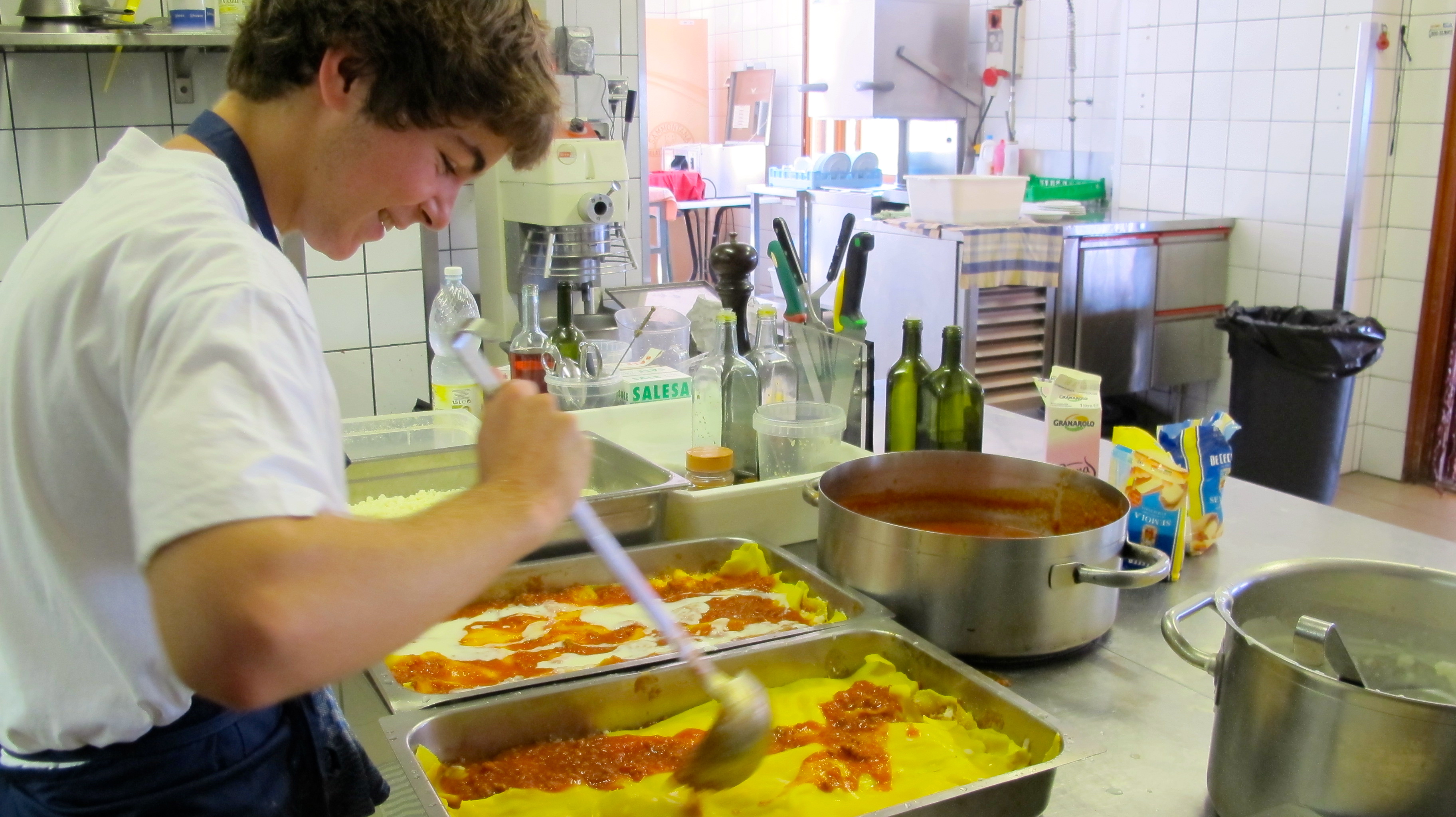


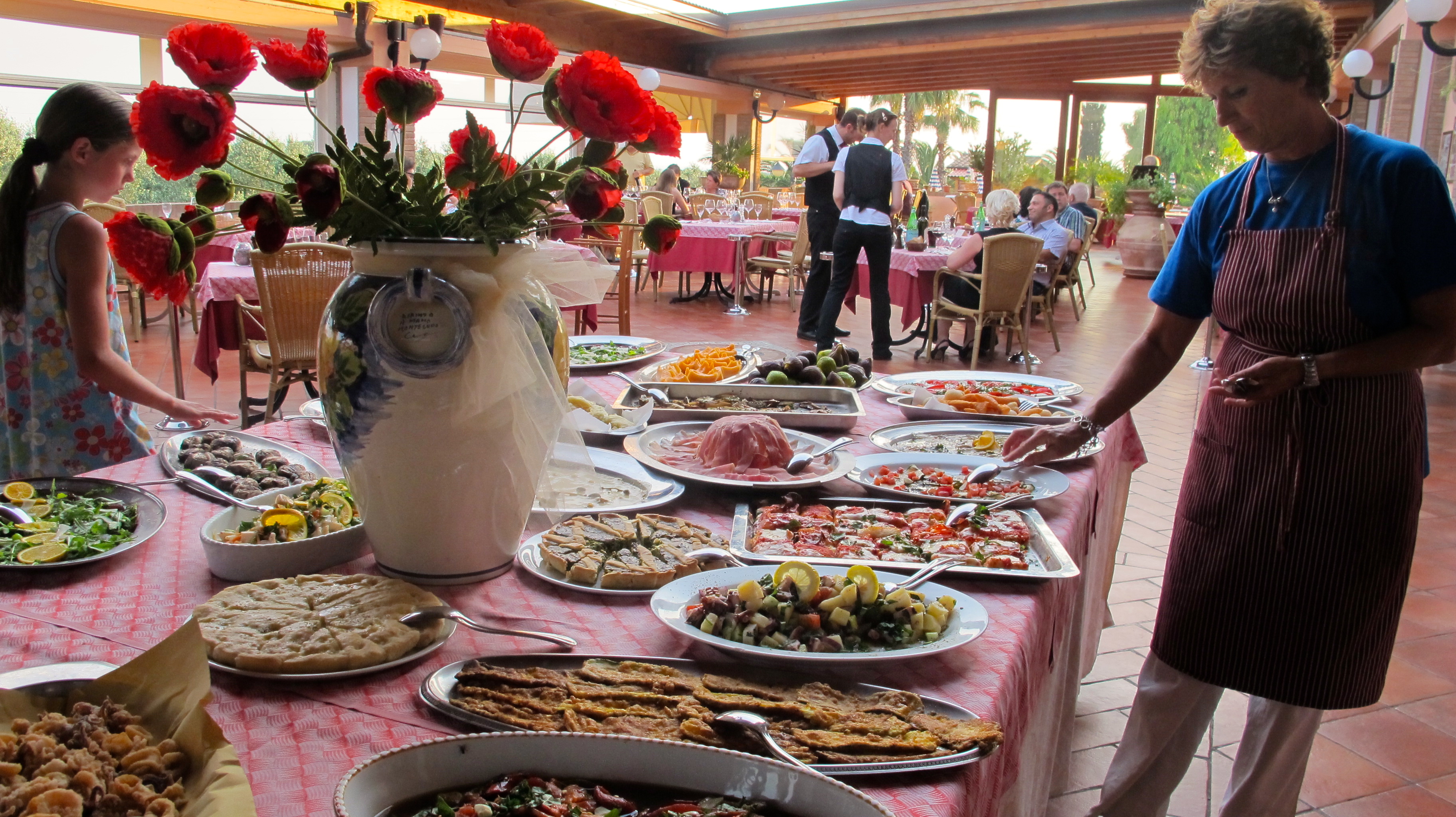
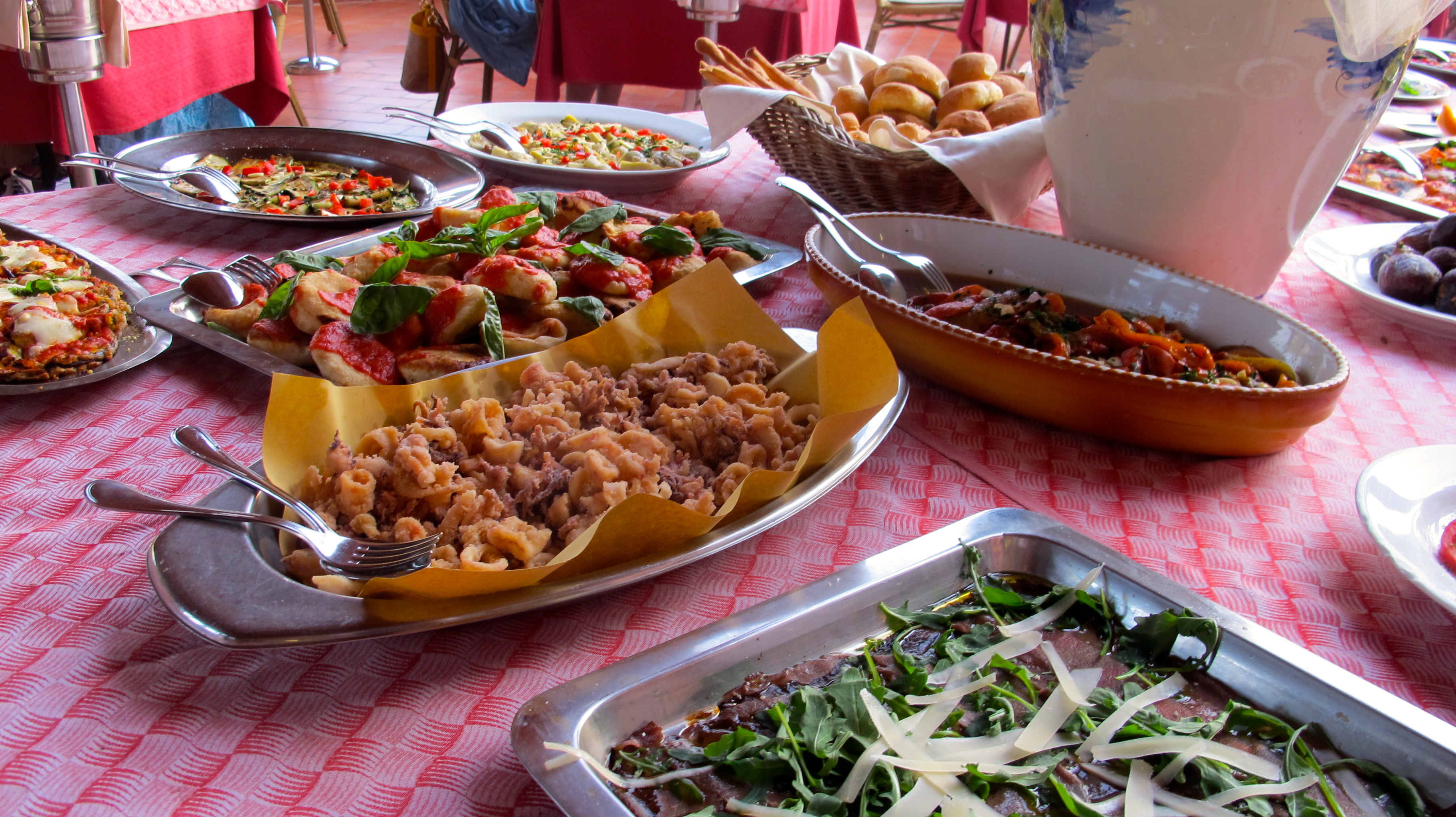
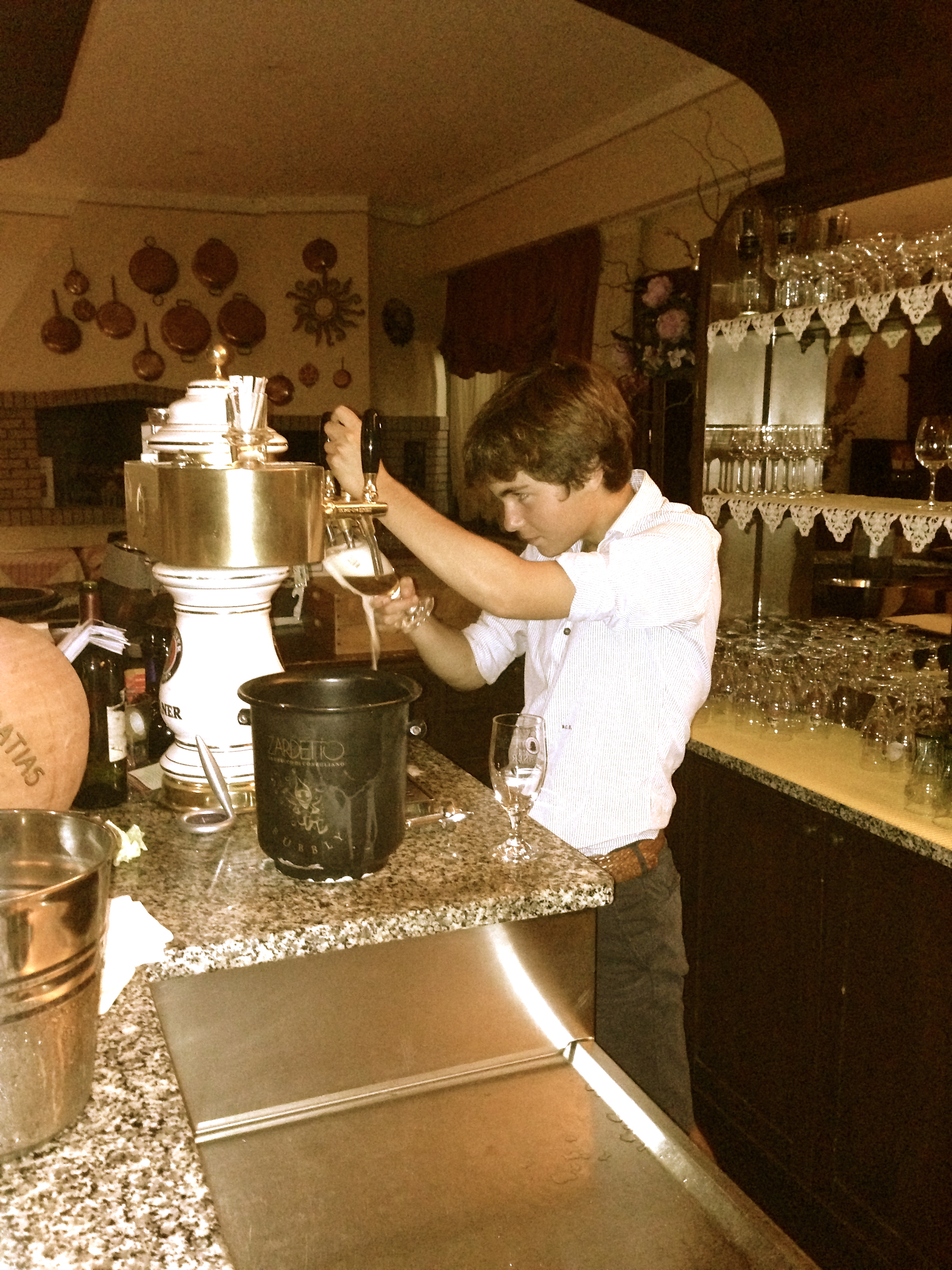
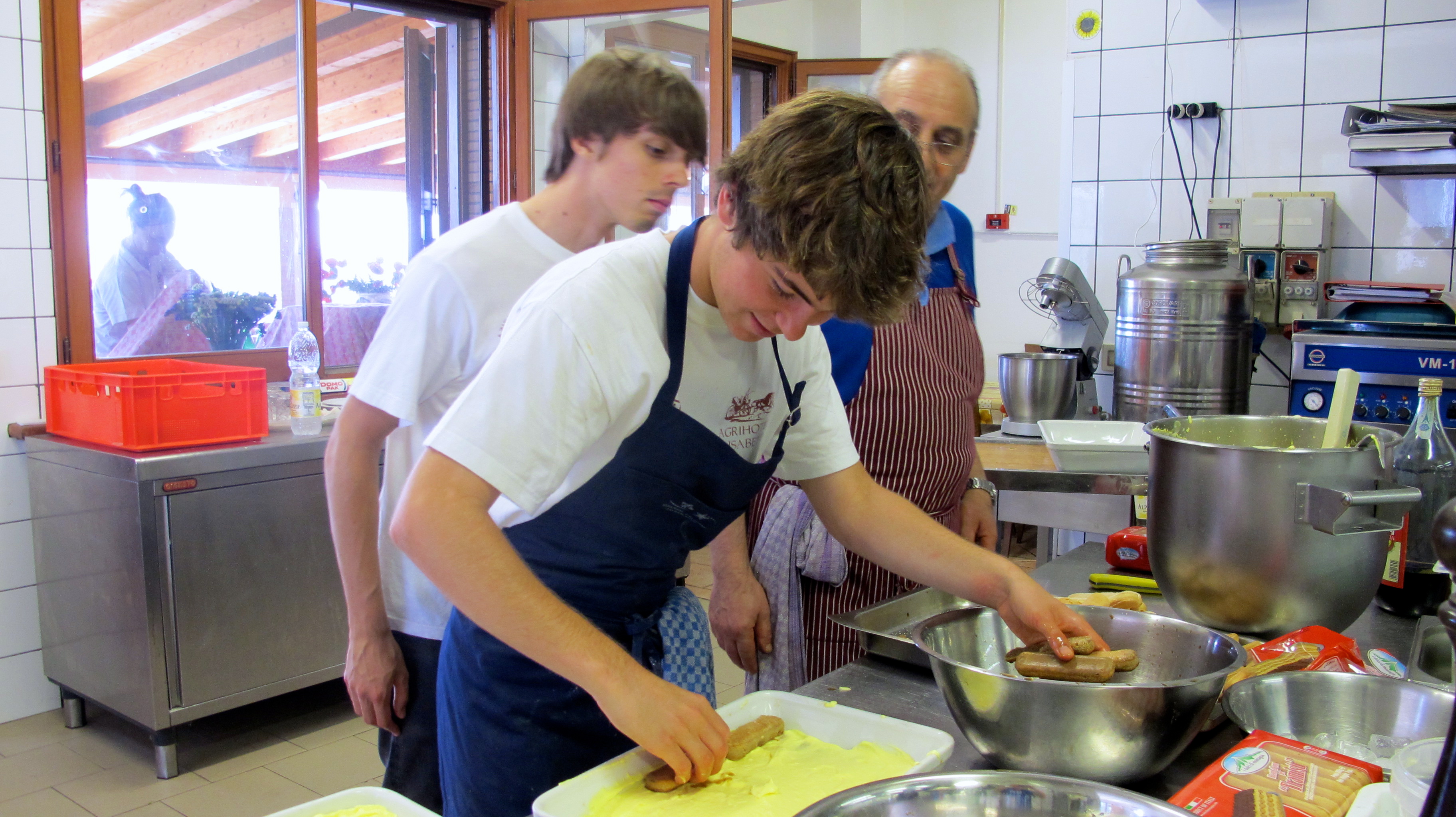
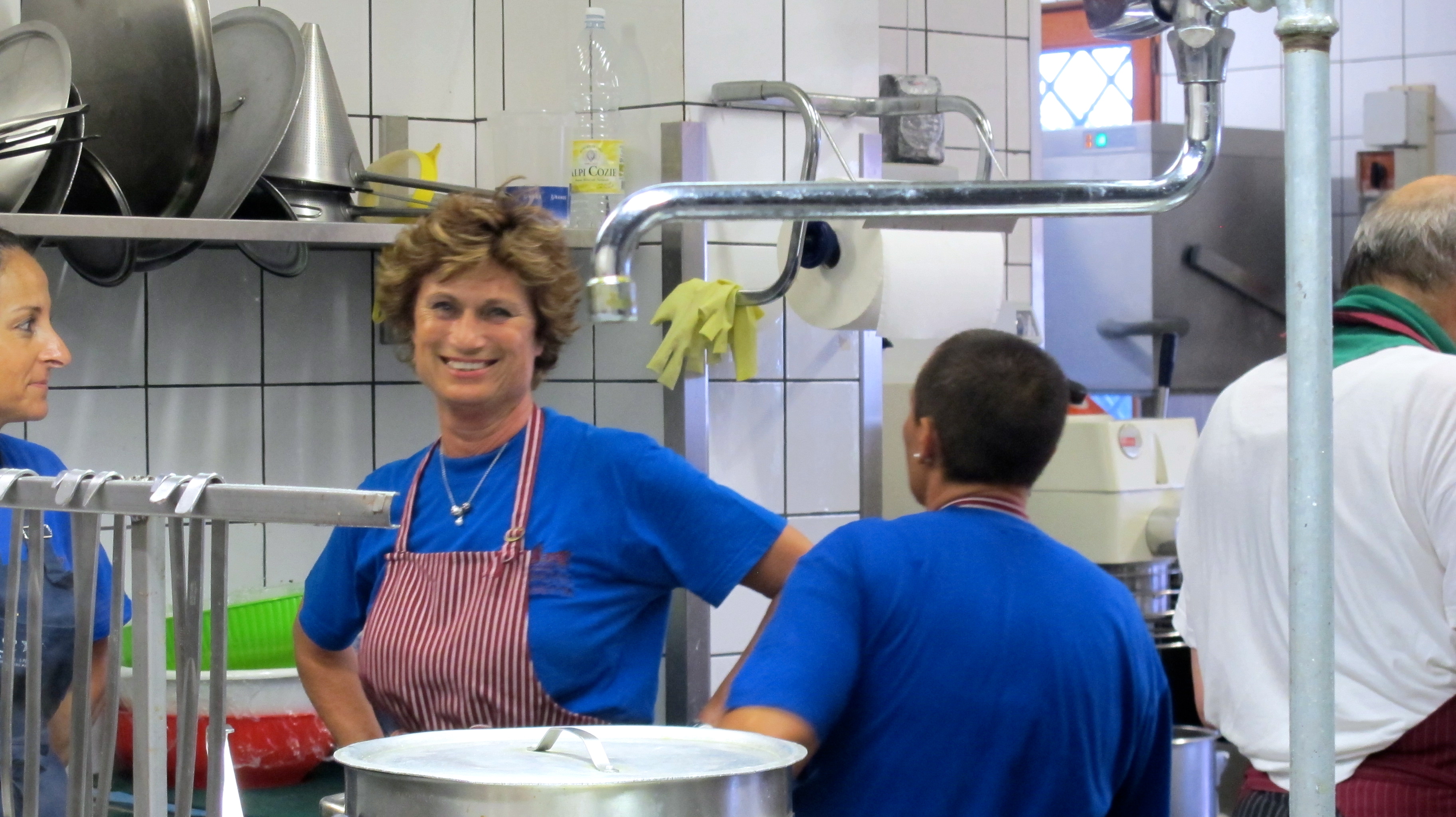
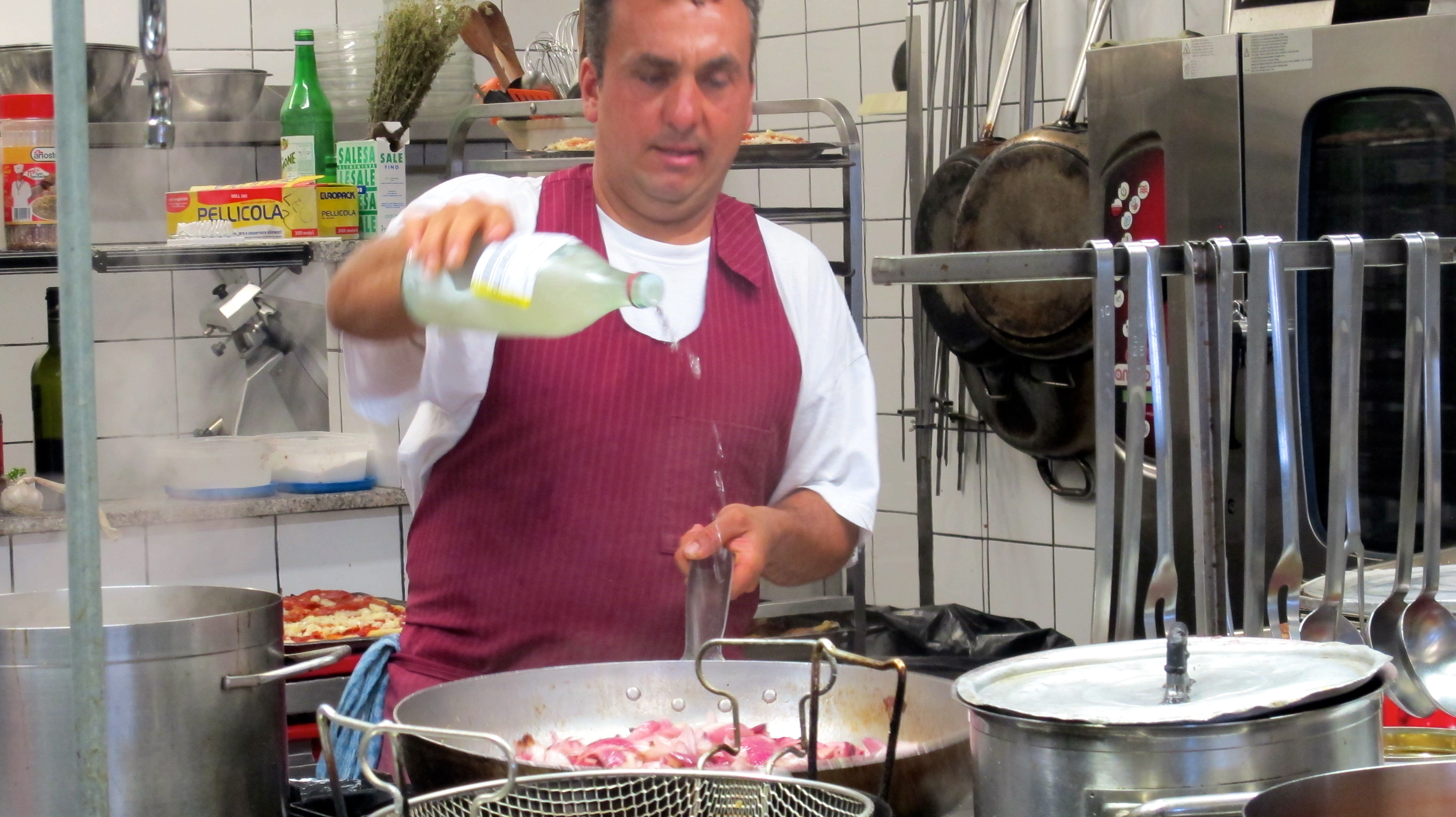
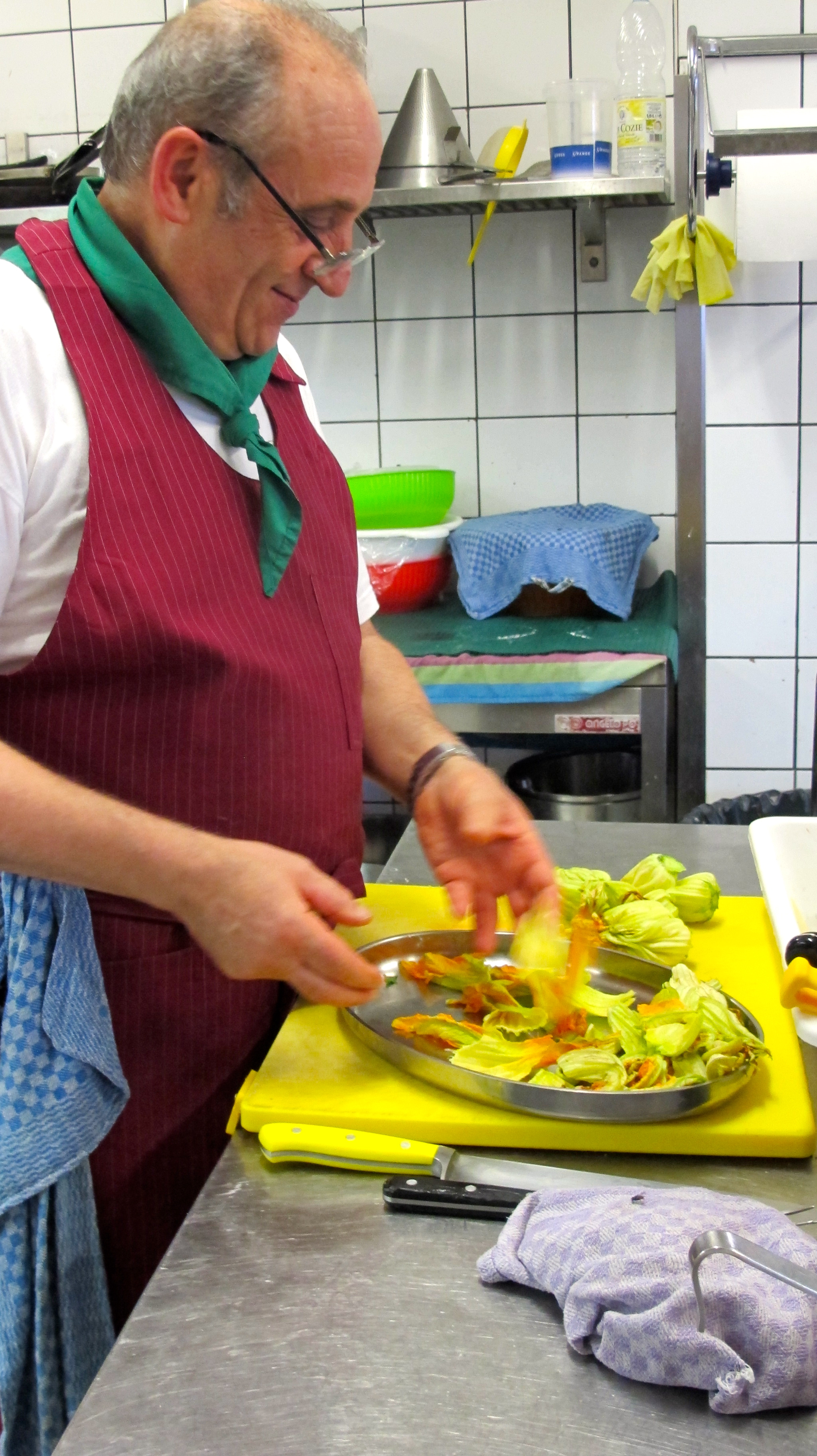
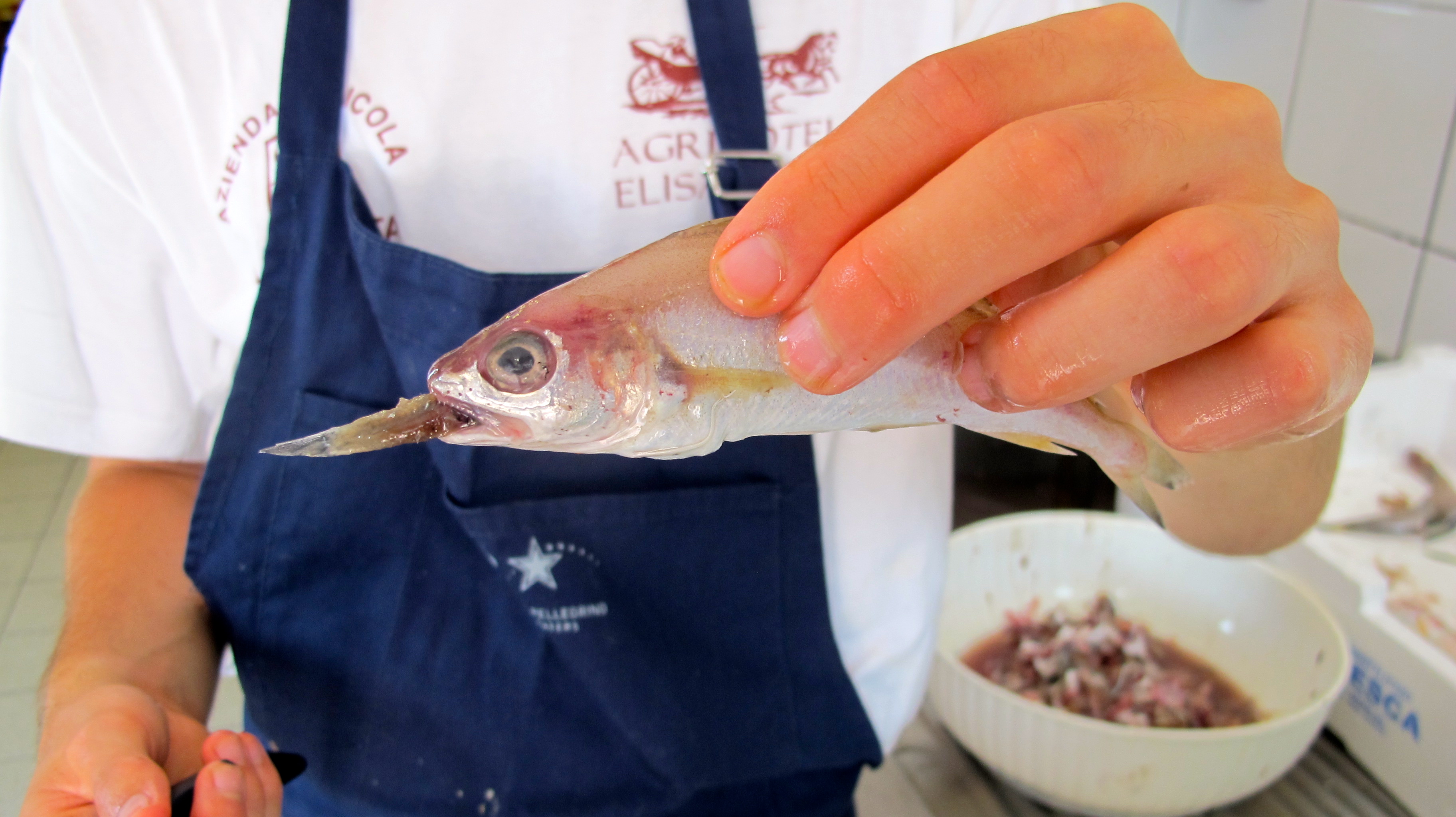
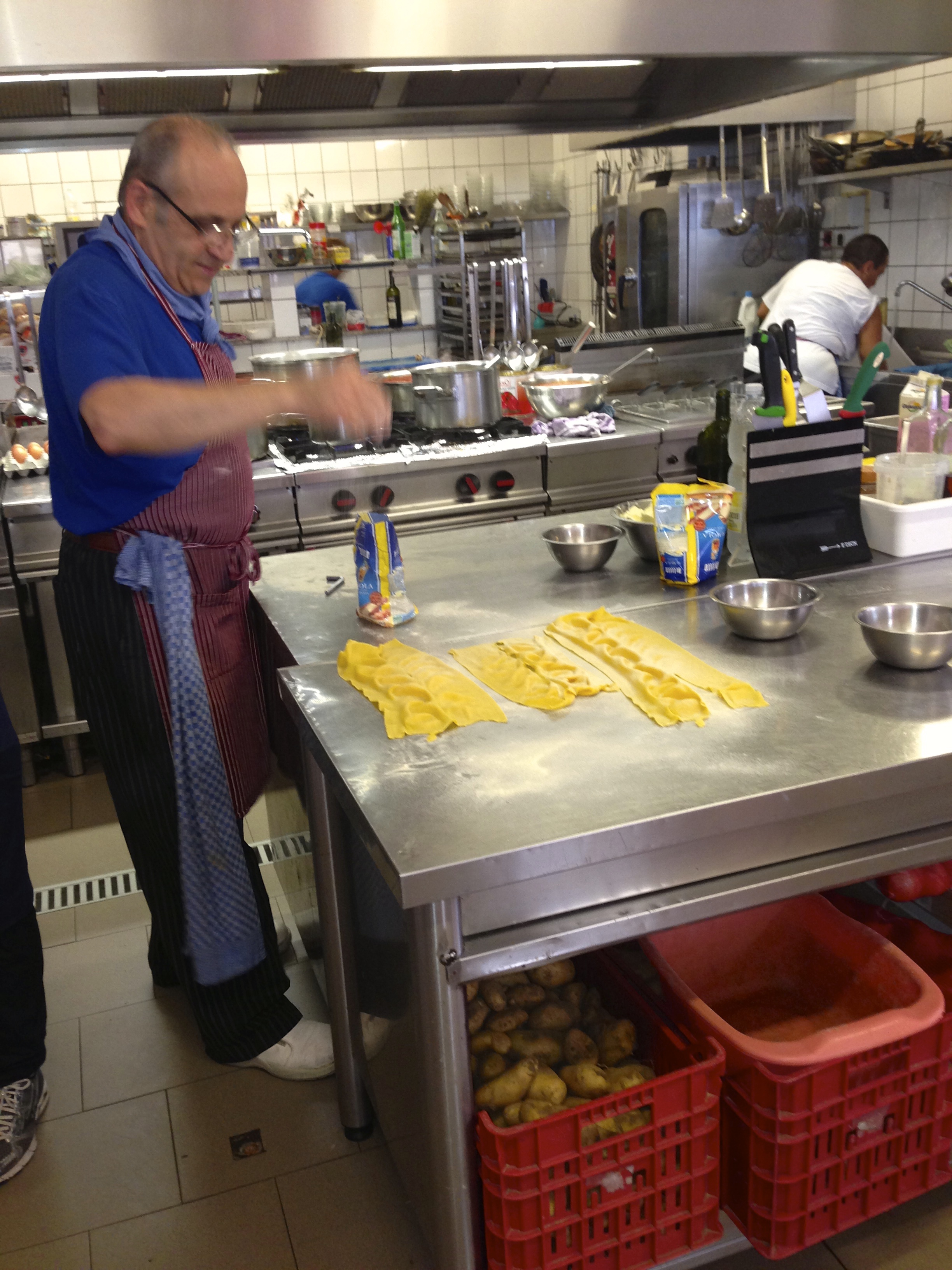
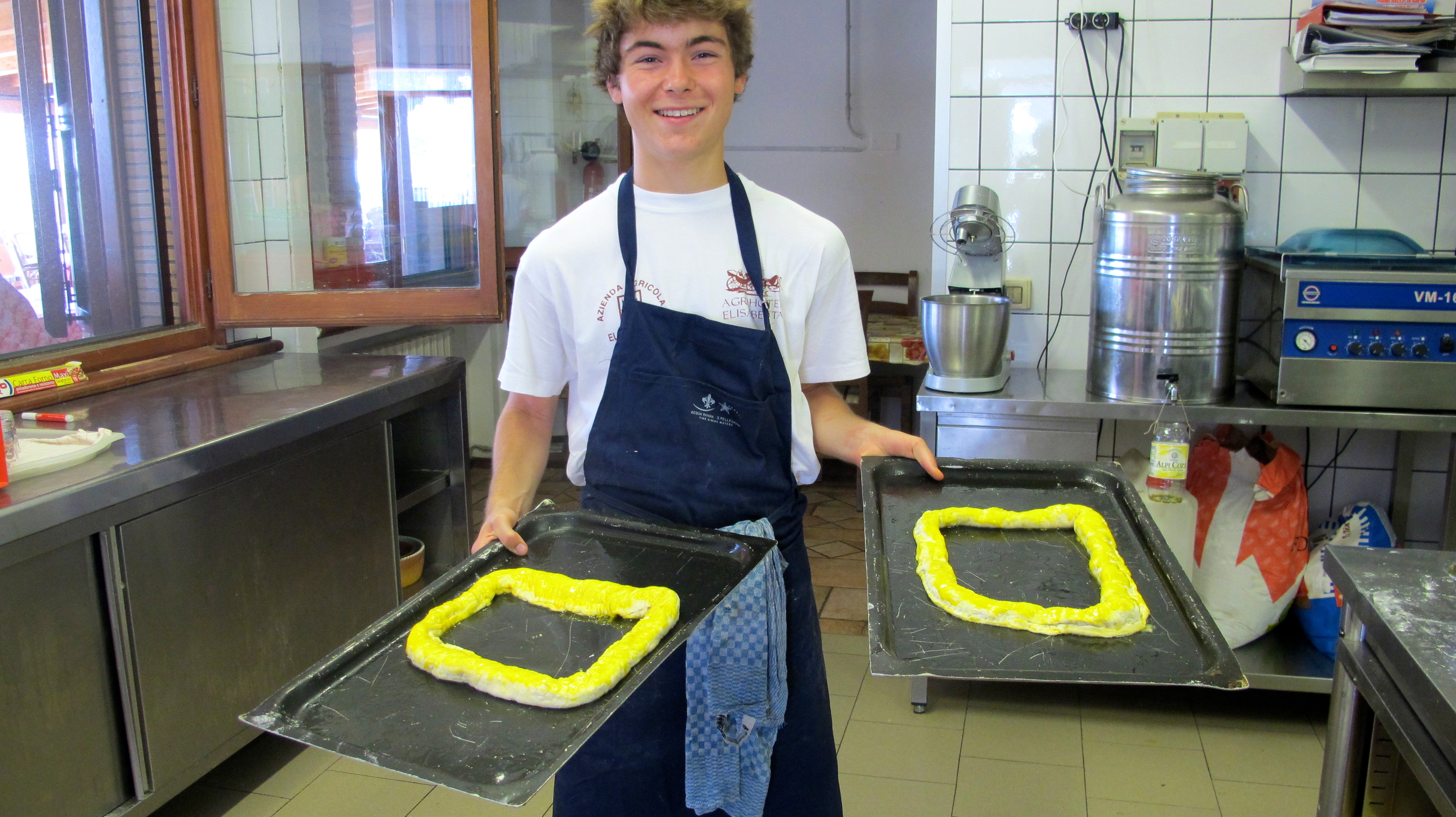
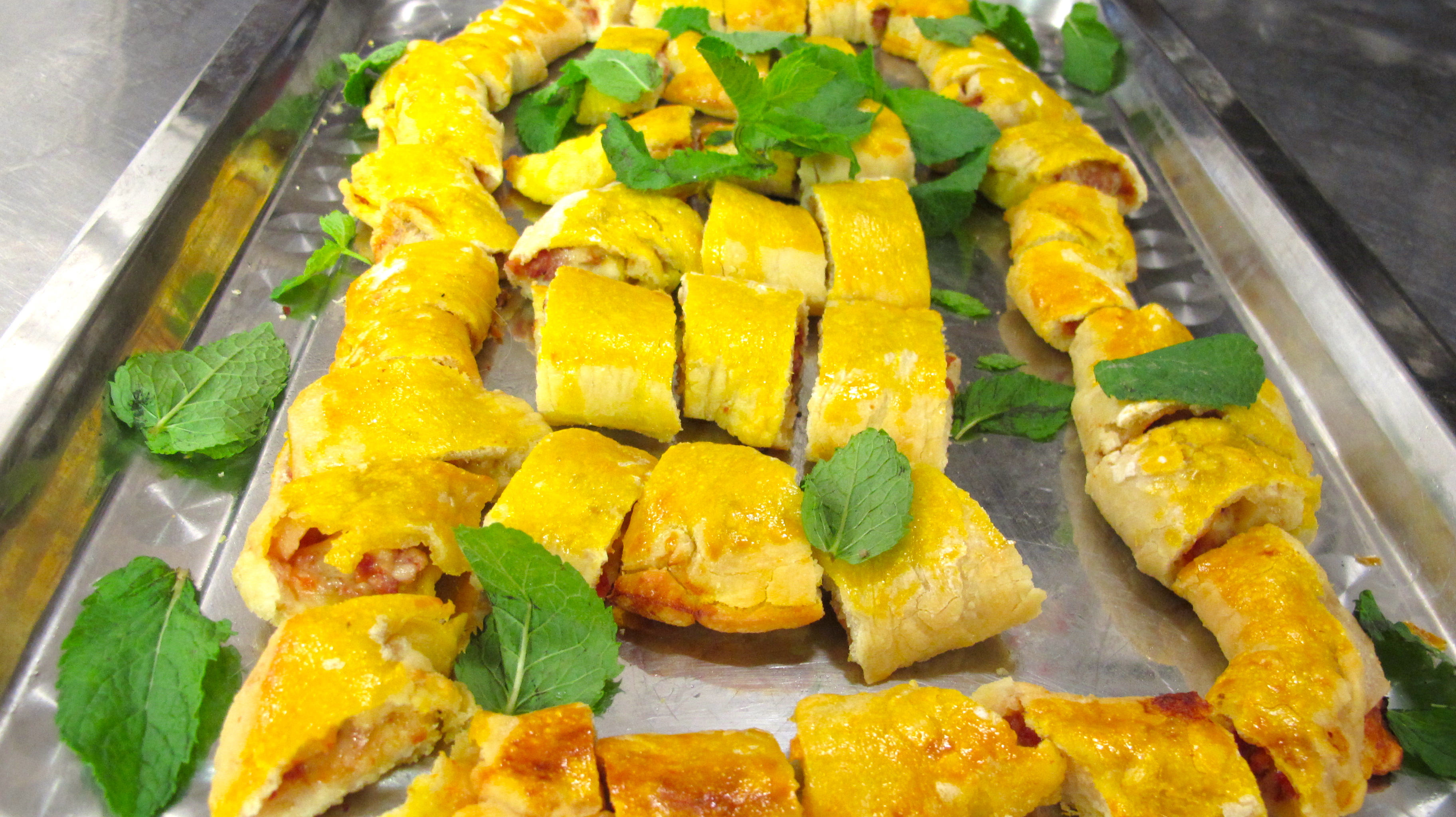
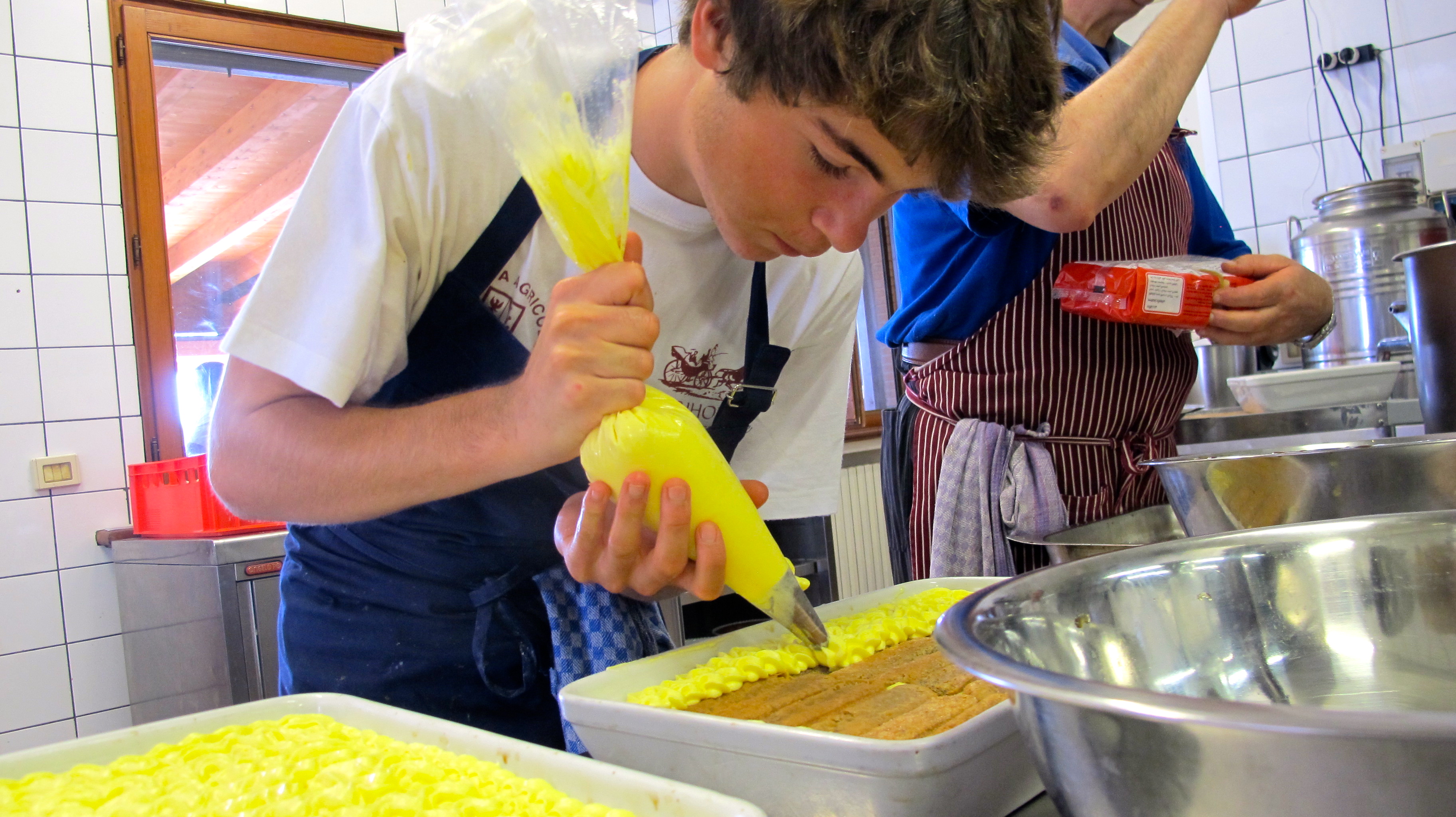
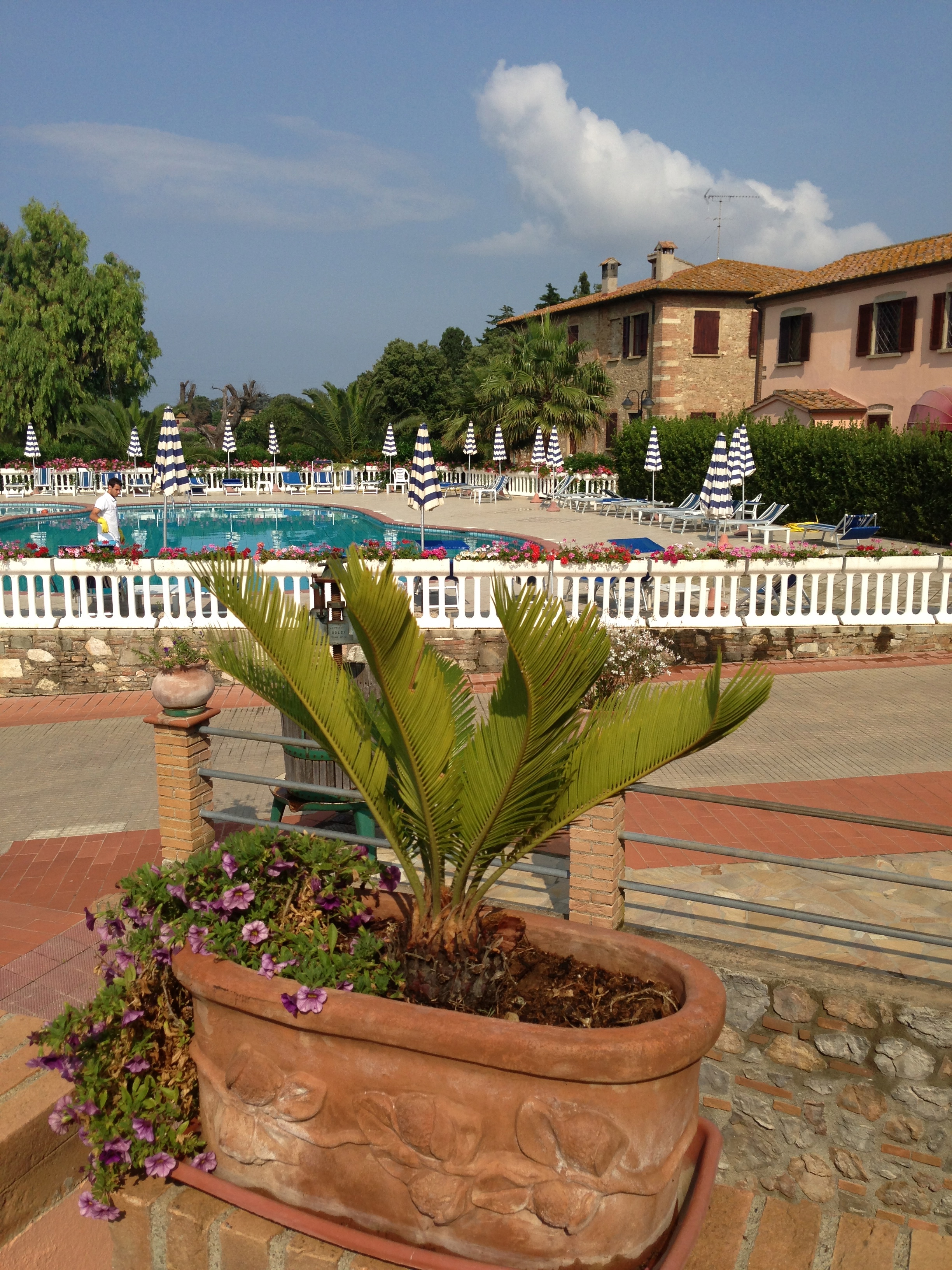
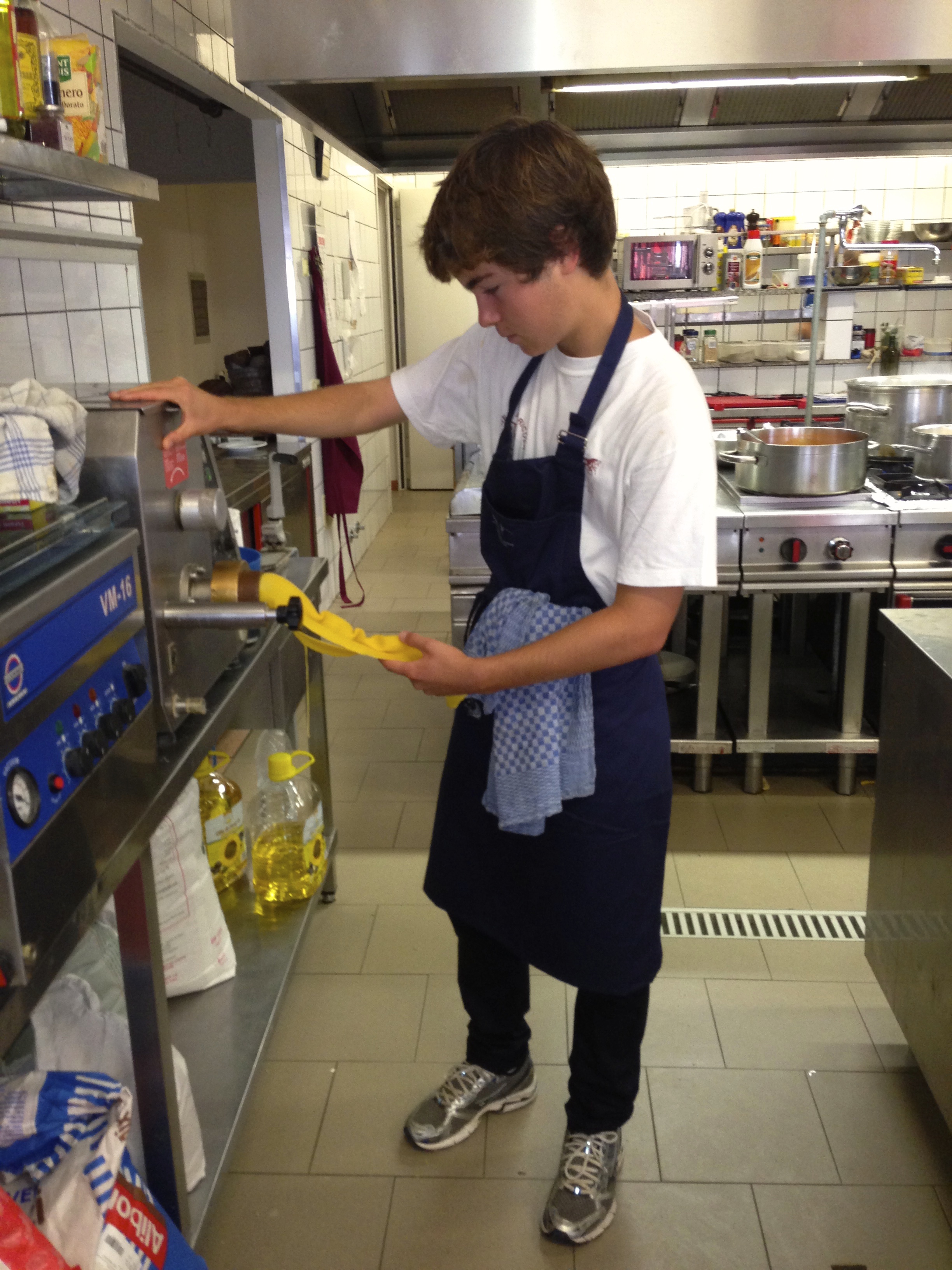
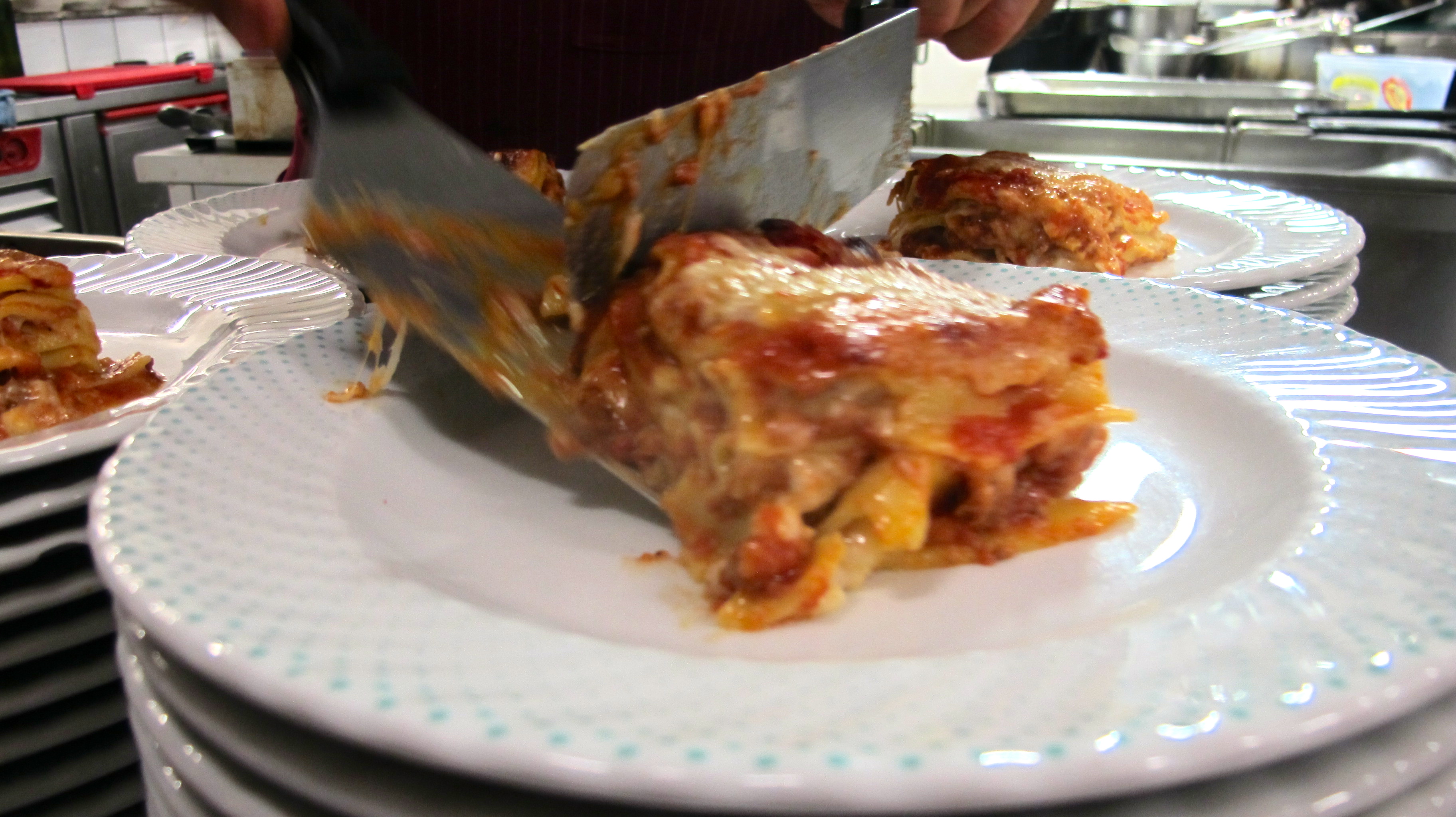
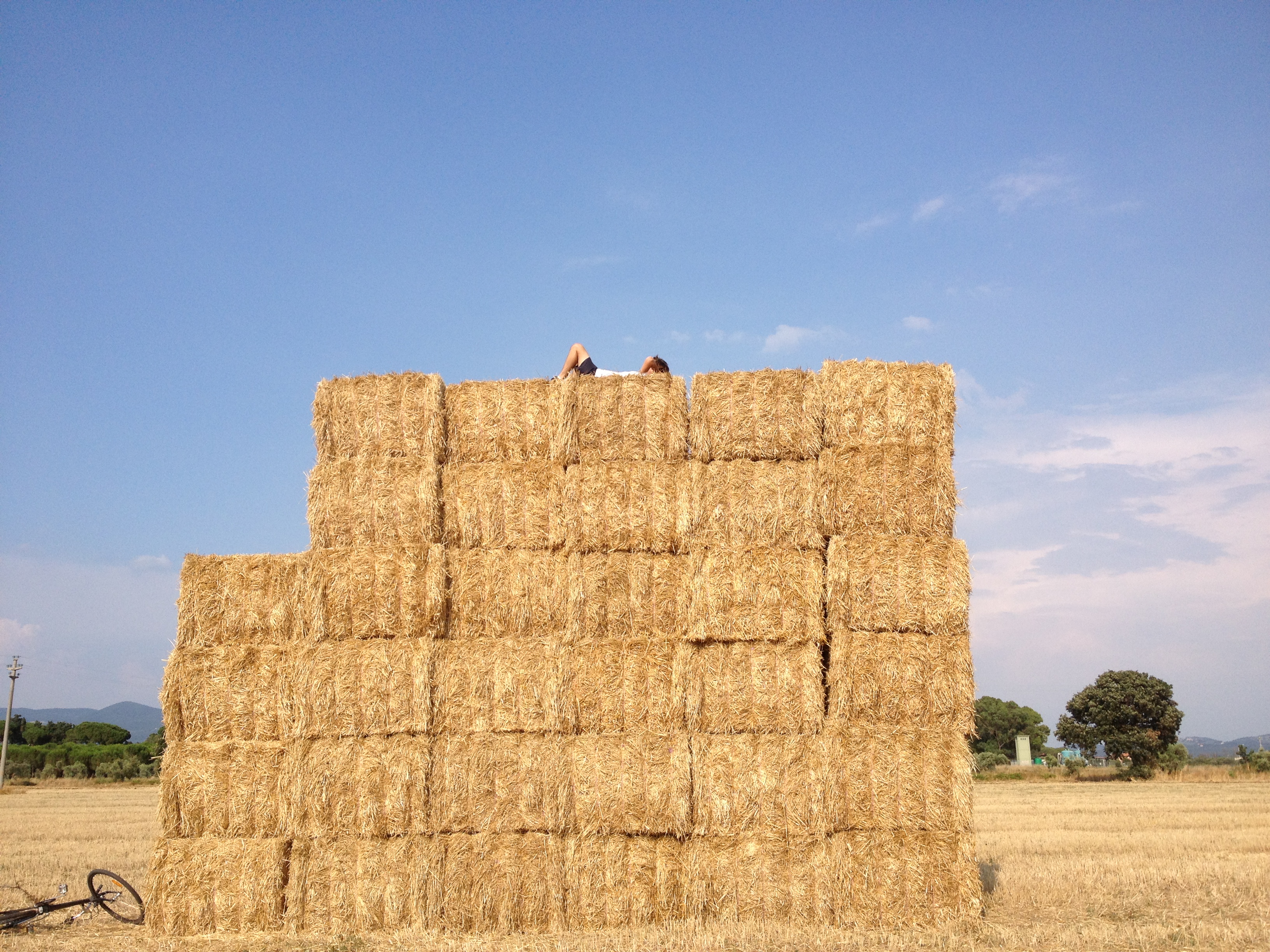
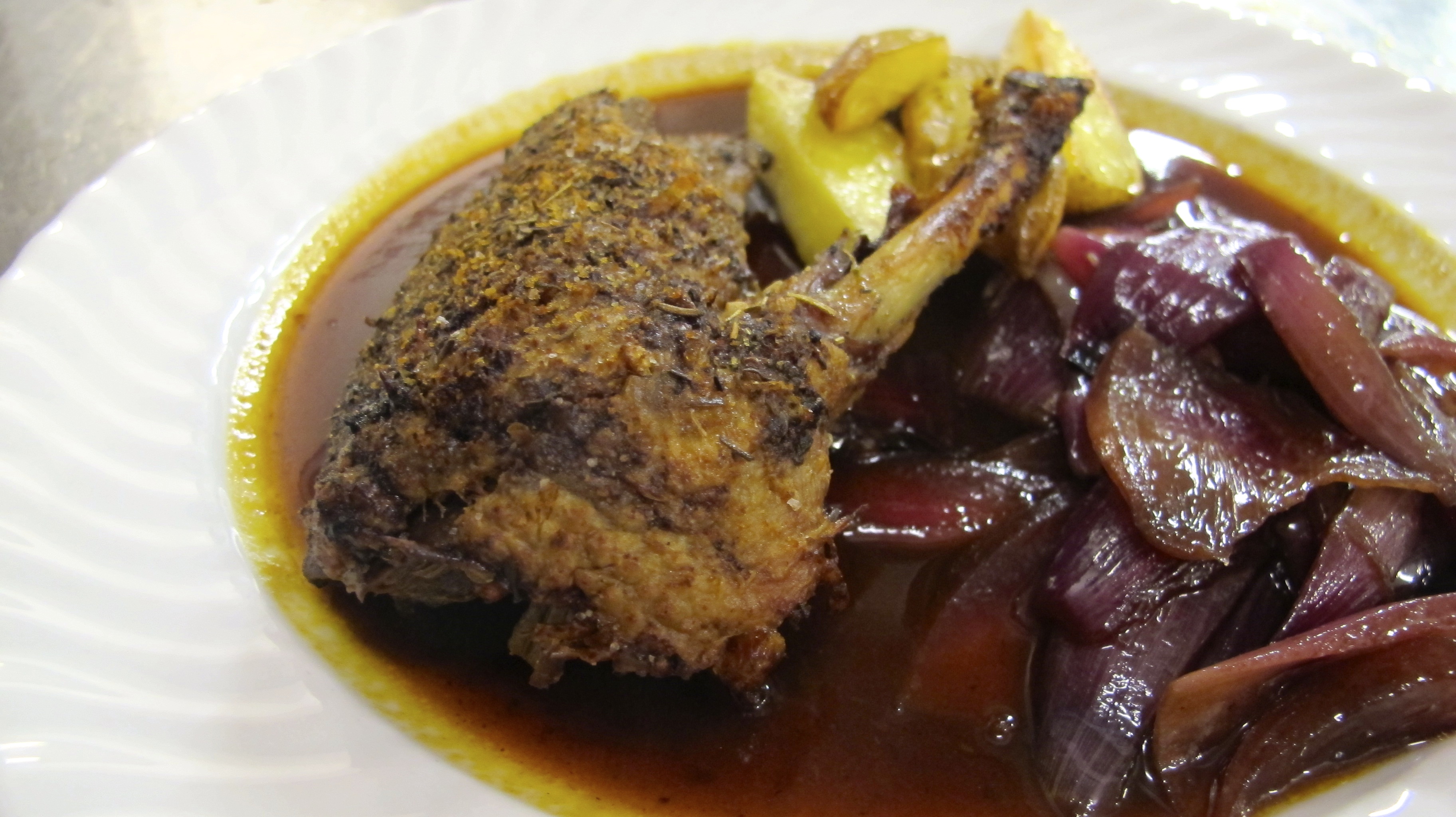
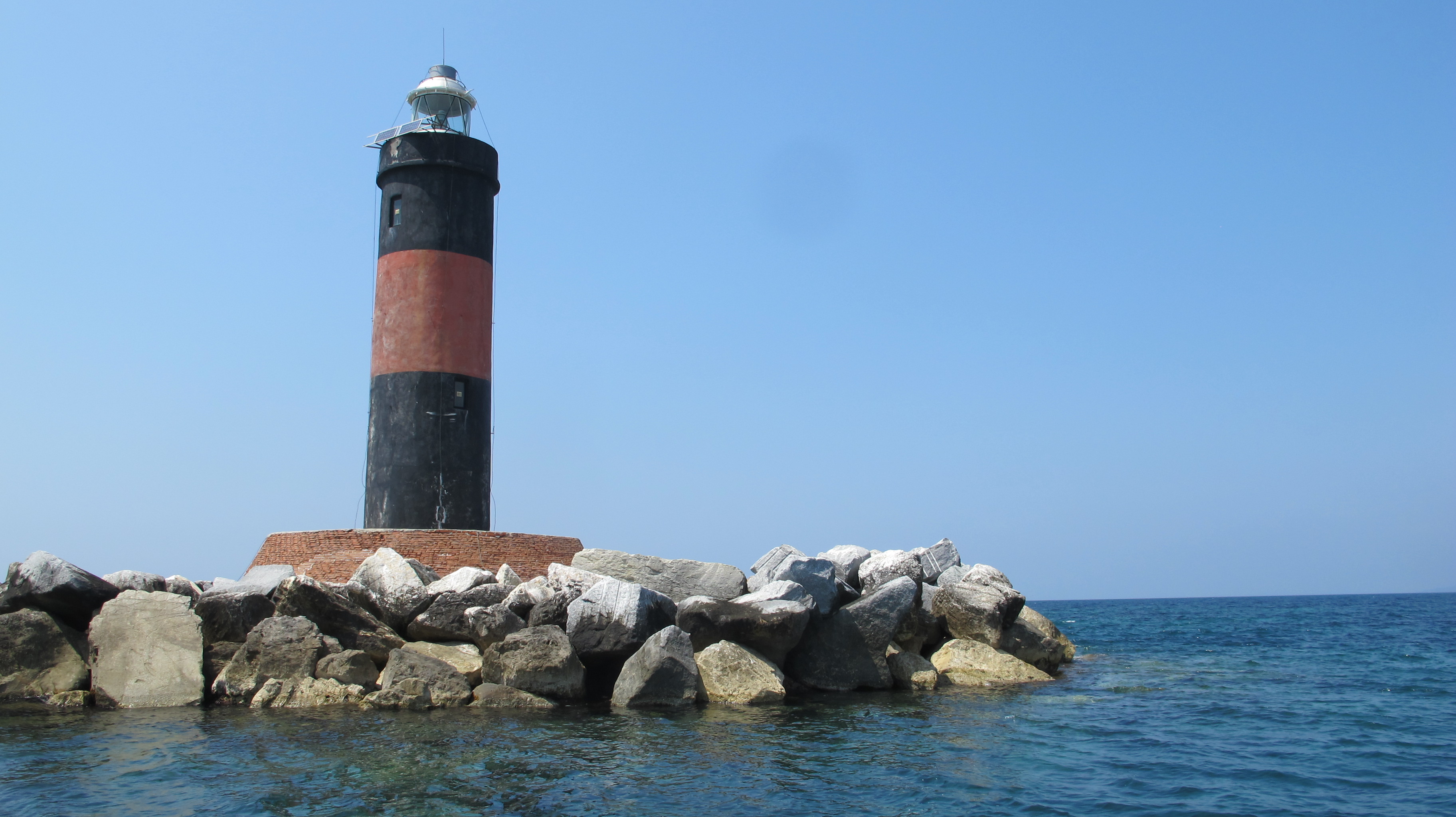
If you are as good a chef as you are a writer…… WOW! So enjoyed reading about your experiences this summer. What a wonderful opportunity for you. And never once did you complain that the kitchen was hot (and I’ll bet it was!). See you when you’re back in the US.
Great to hear from you, Nancy! Thanks!
The kitchen was hot, but it was bearable. Not as hot as a VA summer!
See you back in the States!
-Ben
Ben, it sounds–and looks–like this was an incredible experience for you, and lots of hard work. I hope your hands are recovering their “normal” smell! I am looking forward to trying some of the new recipes that I am sure are going to appear soon on your blog.
Haha, yes, my hands have returned to normal. Look out for the recipes, they’ll be coming soon! We will definitely have to try some out at another dinner soon back in the states! Great to hear from you, Sandy. I always appreciate the support. Say hello to all for me!
-Ben